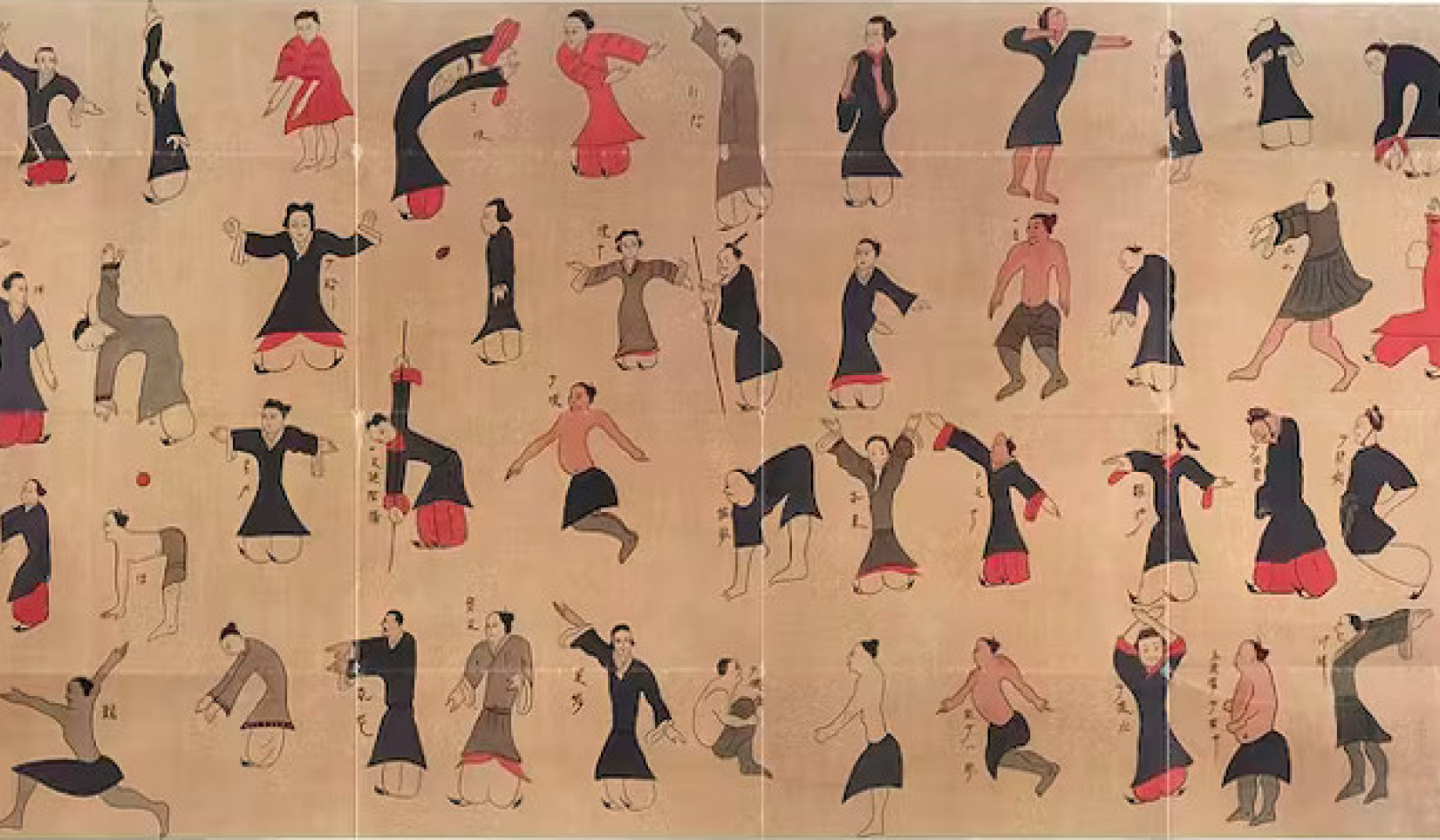
Who has seen the wind?
Neither you nor I:
But when the trees bow down their heads,
The wind is passing by.
-- CHRISTINA ROSSETTI (1830-1894)
Like the wind in this old nursery rhyme, emotions are invisible. We can't see them directly with our normal vision. Rather, we feel them in our bodies. The same word -- feelings -- describes both physical sensations and emotions. This is no accident. Certainly you have experienced:
- nervousness that gave you butterflies in your stomach
- anger that burned you up
- fear that stopped you cold
- excitement that had you jumping for joy
- love and affection that melted your heart
- bottled up sadness that left a lump in your throat
- relief that felt as if a weight had been lifted from your shoulders
As for detecting other people's emotions, you know by the signs. Even when no words are spoken, you often know what's going on inside another person. Sadness shows up in a teardrop, anger in a frown, playfulness in a carefree hand gesture, fear in a jittery foot, happiness in an ear-to-ear grin.
Body Language Speaks Louder Than Words
When it comes to emotions, body language speaks louder than words. Has anyone ever declared to you, "Who, me? Angry? No, I'm not. I'm just fine." Yet the clipped tone and set jaw told a different story. This is the quintessence of incongruity: saying one thing but feeling and thinking something else. Yet you probably were not fooled. The face and voice belie the real truth. Emotions will come out, like it or not.
The Latin roots of the word emotion tell the whole tale: e (out) + movere (move). Feelings either flow naturally, like a river, or get dammed up. If blocked, they may well up in the subconscious, that subterranean region too deep for the light of awareness to reach. Relegating unwanted emotions to our depths can cause tension headaches or worse. Eventually, these orphaned feelings will leak out, overflow, or burst out in a deluge.
It is the nature of emotions to move. If you want to see for yourself, watch infants and young children. Before they've learned to squelch certain emotions, little kids just let them out. Three-year-old Jana is cuddling her teddy bear when it is abruptly pulled out of her hands by a playmate. Jana howls with anger. Nine-year-old Bobby, upon learning that his pet rabbit has died, immediately bursts into sobs of grief.
Emotions provide motivation to act for our own survival. Tanya learned to fear traffic when she saw a neighborhood dog hit by a car. Her fear keeps her from playing in the street and is therefore life serving.
Emotions Enable Us to Embrace Life
Emotions also enable us to embrace life with honesty, creativity, and enthusiasm. Feelings enliven us, giving color and texture to our experiences. To feel the full range of emotions is like painting with a complete palette of colors. Ask anyone who has experienced severe or sustained periods of depression. When feelings vanish, and one is emotionally flat, life hardly seems worth living. In fact, this gray state sometimes triggers suicidal thoughts or actions.
From merely surviving to experiencing true vitality, emotions serve us well. However, we need to know what emotions are and what we have to learn from them.
- How do I find my emotions and really feel them?
- Once I get in touch with them, what do I do with my emotions?
- How do I handle a specific feeling such as fear, loneliness, grief, or rage?
Emotions Can Be Messy and Irrational
Ah, yes. Emotions. Those messy, irrational, confounding, naughty little tricksters who pop up at the most inopportune moments. Just when you thought you had finished grieving the death of a loved one, tears suddenly start welling up right in the middle of the supermarket. Or you were so certain you had your anger in check, only to have it leap out in a temper tantrum at work, of all places. Suddenly you shrank from a competent professional to an unruly child throwing a fit. How embarrassing, how dangerous. Such outbursts can become even more lethal when they erupt as "road rage" while driving home from work in stop-and-go traffic.
We read about managing our emotions or impulse control. And we try. But what often happens is that we suppress (stuff down) or repress (deny) our unruly feelings. Like the variety of bamboo that spreads through a massive network of underground branching roots, we cut our emotions down here only to have them show up yards away, through the concrete, gravel, and bricks of our life. Where will our hidden feelings pop out next: in the bedroom or at a board meeting? At church or on the way to work?
On the opposite side of the spectrum are the people who couldn't feel an emotion if their lives depended on it. (And the quality of their lives and health do depend on it, I assure you.) What happens to those who have numbed or stuffed their emotions because it's been just too painful, scary, or unacceptable to feel them? Some of these people turn to addictions or medication to sedate their feelings. Others store the emotions in the closets of their bodies and suffer from stress disorders. Remember, emotions will come out, sooner or later. They've got to keep moving.
Emotions and Body-Mind Medicine
Various studies have shown that approximately 80 percent of visits to the doctor are the result of stress-related conditions. And evidence is mounting that many illnesses are simply cries for help with emotions. Research into support groups, body-mind counseling, meditation, expressive arts therapy, biofeedback, and other psychospiritual treatment methods shows that, many patients improve, go into remission, or live longer than control groups. This line of inquiry is not new. In the 1970s Dr. Hans Selye, in his book The Stress of Life, and Kenneth Pelletier, in Mind as Healer, Mind as Slayer, mapped out the territory. Dr. Herbert Benson of Harvard provided practical guidance in his book The Relaxation Response, and in the '80s, Benson's associate, Dr. Joan Borysenko, expanded upon meditation and relaxation techniques in her book Minding the Body, Mending the Mind.
By the '90s, our understanding of how thoughts and emotions affect our bodies, and vice versa, had grown by leaps and bounds. As an art therapist and leader of health support groups, in the late '80s and early '90s I published several books on body-mind healing and recovery through the arts. I was grateful for support and endorsements from Dr. Borysenko, Dr. Bernie Siegel (oncologist and author of Love, Medicine and Miracles), Norman Cousins (who laughed himself well), and Dr. James Pennebaker, whose research into the healing power of writing has corroborated my own findings.
Alternative or Body-Mind Medicine
In the last decade, so-called alternative or body-mind medicine, once considered fringy and faddish by the medical establishment, has gradually moved toward the mainstream. Big pharmaceutical companies are advertising their own line of herbal remedies on television. Ten years ago, such potions were still considered the domain of quacks or witches. Of course, they still are in some quarters, but the tide is clearly shifting by popular demand. Polls and studies indicate that one in three Americans are turning to remedies and treatments of alternative or holistic medicine: chiropractic, acupuncture, body-mind therapies, biofeedback, hypnotherapy, naturopathic medicine, and homeopathy. Some health insurance companies, having recognized the dollar-saving value of these approaches, are now covering such things as chiropractic and acupuncture.
Reputable physicians like Bernie Siegel and Larry Dossey even talk about prayer as medicine and cite data from hard science complete with replicable control-group studies. It's getting more and more difficult to pooh-pooh these experienced clinicians and researchers as oddballs. Judging from the popularity of authors and speakers like physician Deepak Chopra, who has popularized the ancient Indian art of ayurvedic medicine, and Dr. Christiane Northrup, who brings compassion and common sense to women's medicine, the public is listening with all ears.
Writing or Journaling About One's Illness
The research of psychologist Dr. James Pennebaker and others has shown that writing about one's illness actually boosts one's immunity. When we met and compared notes in the late '80s, Pennebaker immediately recognized the value of my Creative Journal method. Although he hadn't included drawing in his published research projects, Pennebaker suggested that the spontaneous healing I was seeing with my clients and students was rooted in the same premise he was working with: Emotional expression is healing. The work of physician Dr. Alfred Tomatis (author of The Mozart Effect) is attracting the attention of laypeople as well as health professionals. The medical prescription of tomorrow may be "Listen to this sonata and call me in the morning."
In Chapter Three (Living with Feeling by Lucia Capacchione) you'll read the case study of one of my journal students, Lucille, who healed herself through a written dialogue. In a reversal of roles, this spunky patient informed her skeptical physician that she wanted to postpone exploratory surgery for a chronic condition so that she could first write a conversation with the body part in question. After Lucille's body chat, the symptoms disappeared, never to return. Much to the doctor's surprise, surgery of any kind (exploratory or otherwise) became unnecessary.
Healthy Expression of Our True Feelings
One of the most respected researchers in body-mind science is Dr. Candace B. Pert, researcher professor in the Department of Biophysics and Physiology at Georgetown University. In her groundbreaking book, Molecules of Emotion: Why You Feel the Way You Feel, Dr. Pert makes a strong case for the healthy expression of our true feelings. She has found that if the outward expression does not match the inner emotion being felt -- in other words, if a person is being incongruent -- a conflict is set up in the body that drains energy away from the vital organs. In her book, she writes:
My research has shown me that when emotions are expressed -- which is to say that the biochemicals that are the substrate of emotion are flowing freely -- all systems are united and made whole. When emotions are repressed, denied, not allowed to be whatever they may be, our network pathways get blocked, stopping the flow of the vital feel-good unifying chemicals that run both our biology and our behavior. This, I believe, is the state of unhealed feeling we want so desperately to escape from. Drugs, legal or illegal, are further interrupting the many feedback loops that allow the psychosomatic network to function in a natural balanced way, and therefore setting up conditions for somatic as well as mental disorders.
Emotions Enliven Us & Fuel Our Creativity
Emotions move through us when they are accepted and expressed. When this happens, feelings enliven us and fuel our creativity. Based on the laboratory of my own life experience, coupled with more than twenty-five years of clinical practice, teaching, and correspondence with readers, I have designed activities for experiencing emotions directly through expressive arts media. These include drawing, painting, collage, clay, music, movement, writing, mask making, and dramatic dialogues. I hasten to add that you don't have to be talented or skilled in the arts to use these materials.
Let me assure you that, unlike the performing and exhibition arts, expressive arts serve primarily as a road into feelings. You will not be critiqued or asked to show your work to anyone else. The only critic you'll meet is the one inside.
\Reprinted with permission of the publisher,
Penguin Putnam Inc. ©2002. www.penguinputnam.com
Article Source:
Living With Feeling: The Art of Emotional Expression
by Lucia Capacchione.
 An outline and instructional guide explains how to use simple exercises to express pent-up anger by drumming, release hurt feelings by molding clay, contact our inner child by writing with our non-dominant hand, and ultimately begin on the road to self-discovery.
An outline and instructional guide explains how to use simple exercises to express pent-up anger by drumming, release hurt feelings by molding clay, contact our inner child by writing with our non-dominant hand, and ultimately begin on the road to self-discovery.
For Info and/or to /Order this book (newer edition/different cover).
About the Author
LUCIA CAPACCHIONE, Ph.D., A.T.R., is an art therapist, artist, author, and popular workshop leader, as well as a corporate consultant who has worked for Hallmark, Mattel, and the Walt Disney Company. She lives near Big Sur, California. Visit her website at http://www.luciac.com
Video: The Creative Journal Method & Visioning®
{vembed Y=dJToiSobh7Q}
























